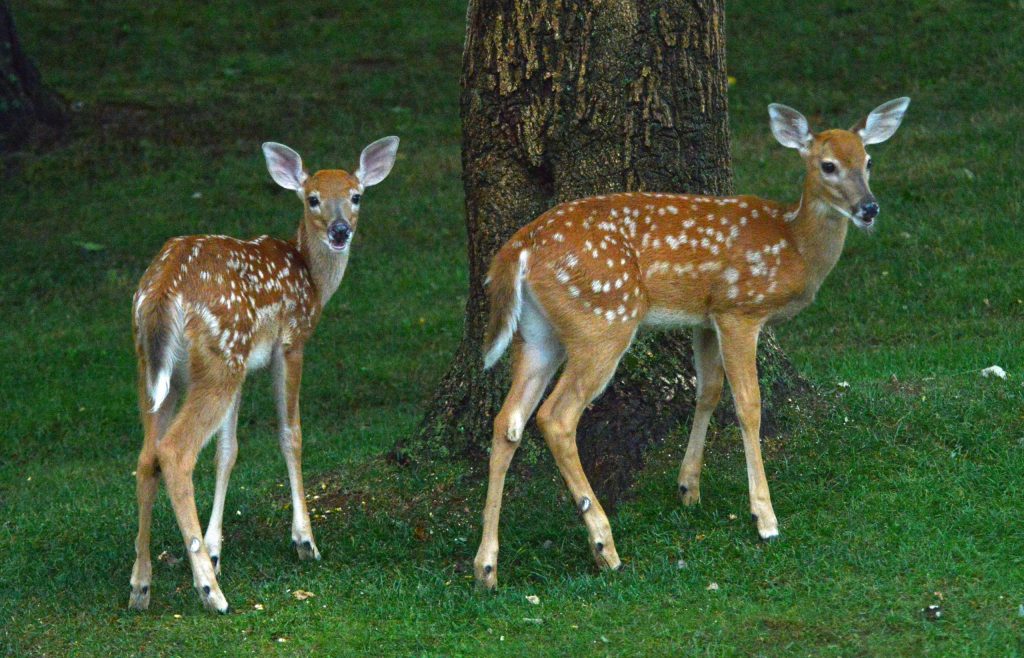Twins are two offspring produced from a single pregnancy. Identical twins occur when a single egg is fertilized by a single sperm to form one zygote which then divides into two separate embryos.
Fraternal twins are the result of two separate eggs independently fertilized by two different sperm. Two zygotes are formed which each develop into an embryo.
There are a lot of twins being born right now. White-tailed does have a two-horned uterus which allows the bearing of twins quite easily. Each fetus gets its own room so to speak. No fighting and plenty of womb to move around!
White-tailed twins are of the fraternal variety. Does ovulate multiple eggs which are then fertilized by different sperm. So while all fawns look alike none of them are actually identical twins even if they do have the same mom.
But let’s rewind. Back to a cool, crisp November evening when love was in the air.
It has long been held that the biggest, strongest, most handsome buck makes all the ladies swoon. He alone has breeding rights.
It is the paradigm of white-tailed deer breeding ecology that a handful of dominant bucks were daddy to the majority of fawns in an area. Behavioral observations set the stage for this theory of the whitetail mating system.
But what happens when we aren’t watching? Wild animals are difficult to observe. Trying to observe a specific behavior, like mating, is the proverbial needle in a haystack. Then try to reliably determine paternity, you are more likely to win the next PowerBall drawing.
Ok, back to the future.

With DNA testing, it is now possible to identify individuals pinpointing exactly who your daddy is. This not only gave Maury Povich an entire talk show but opened a whole new world regarding mating systems and paternity in wildlife.
Soay rams, 9-banded armadillos, harbor seals, greater horseshoe bats, and brushtail possums are just a few of the species on which DNA paternity studies have been conducted.
And as more tissue is spun around in test tubes, interesting details have surfaced, like multiple paternity. That’s right the fathering of individuals in the same litter by more than one male. Deer mice, commons shrews, black bears, and grizzly bears have documented cases of multiple paternity.
Why do I bring this up? Those astute readers have already guessed.
White-tailed deer can be counted among those species for which multiple paternity in a single litter has been documented – first in 2002 in a study involving captive deer. Two years later, a population in Michigan was the first free ranging population to confirm multiple paternity. Since this initial finding, multiple paternity has been documented in every free-ranging white-tailed deer population that has been tested.
White-tailed twins have about a 20 to 25% chance of not even being fraternal twins! They, in fact, are only half siblings – twins only in the most basic use of the term. Which exposes a new truth in white-tailed breeding ecology: does mate with multiple bucks. Suggesting she has an active role in this “bedroom” saga and gives new meaning to not putting all her eggs in one basket. If you ask me, that is kind of magical.
-Jeannine Fleegle, Biologist
PGC Deer and Elk Section
If you would like to receive email alerts of new blog posts, subscribe here.
And Follow us on Twitter @WTDresearch
